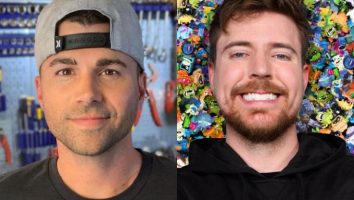Scooby-Doo, where are you? On clothes and toys and gifts and snacks . . .
It’s no mystery that Scooby-Doo and his sleuthing pals are among the most recognized animated characters around. Warner Bros. Consumer Products is using Scooby’s popularity as a foundation to build the character as a brand in a similar fashion to its Looney Tunes characters.
With over 80 domestic licensees to date, a new direct-to-video animated movie on the way, a major third-quarter packaged-goods promotion with General Mills and continued exposure on Cartoon Network, TBS and TNT, there appears to be no lack of Scooby snacks in the future.
It’s been nearly 30 years since the original Scooby-Doo, Where are You? series first aired in 1969. The Hanna-Barbera show was the first mystery-comedy cartoon of its kind. Over 300 episodes have been produced in some version or another until 1991.
Scooby has had tremendous staying power. As of November 1996, character awareness was 93 percent among kids age six to 11, 90 percent among kids age 12 to 17 and 96 percent among adults age 18 to 34, according to Marketing Evaluations, Inc. The theme song is firmly ingrained on two generations of TV viewers (admit it, you’re humming it right now).
Scooby’s high awareness with consumers, retailers and licensees sent a strong signal to Warner Bros. that Scooby should become a brand of its own. ‘With what we see in today’s retail climate, it’s very important to establish day-in, day-out brands that the retailer can depend upon,’ says Rob Gruen, executive vice president of worldwide marketing and retail business development for Warner Bros. Consumer Products.
Time Warner acquired the Hanna-Barbera stable of characters as part of the merger with Turner in 1996. Taking advantage of its studio stores, the company had a ready-made retail laboratory to test product from the various Turner properties to get a read from the consumer as to which ones had long-term viability and which needed help.
Scooby-Doo didn’t need help. ‘The amount of history on Scooby led us to believe that it should be a very strong brand,’ says Gruen. ‘Sure enough, when the studio stores brought in product, it bore that out. Scooby very quickly rose to the level of some of the Looney Tunes characters, in terms of their day-to-day sales in studio stores. We knew there was something here that made sense.’
Warner set about giving Scooby a face-lift, developing new style-guide artwork, new hang tags and labeling programs, and other elements needed to establish it as a brand. ‘Once we say that Scooby is becoming a brand, we have a responsibility to the brand and must be prepared to do things to keep it fresh and exciting and out there top of mind with the customer,’ he adds.
The number of Scooby licensees has grown from a handful when Warner acquired it in 1996 to over 80 today. Initially, Scooby product was found in mid- to up-market stores like Kids `R’ Us, but will now move to mass-market distribution channels in mid-1998.
The studio is excited about its fall 1998 direct-to-video release, Scooby-Doo on Zombie Island, which will be supported by yet-to-be-announced promotional partners, retail tie-ins and a rebate program. There are no plans for a new animated series because the old shows still have a contemporary feel given the current fascination with the `70s, says Gruen. Scooby has been integrated into all of the various media outlets Time Warner offers, including on-line, publishing, home video and cable.
Another big program this year is a packaged-good promotion with General Mills. ‘Scooby-Doo Fruit Snacks’ will hit food store shelves in the third quarter.
Launching Scooby-Doo as a brand is just one step in the re-emergence of the Hanna-Barbera characters and licensed properties. Internationally, Warner has scored success with Tom & Jerry. The studio has recently completed style guides on secondary characters, like Quick Draw McGraw and Huckleberry Hound.
‘People who have had success with us before have recognized the value that Warner Bros. can bring to a license and they are very interested in Scooby-Doo,’ says Gruen. ‘What we’ve done is seen an opportunity to build another strong brand in our arsenal, and we’ll do everything within the Time Warner realm to make it work.’





















